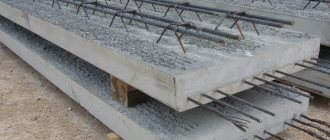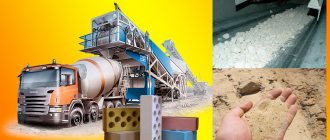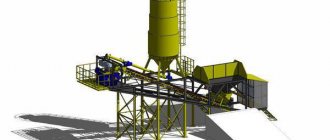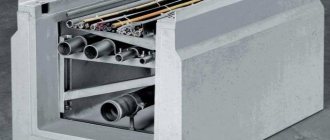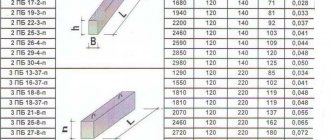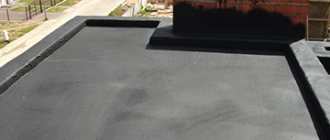Slag is a recyclable material that is often used in construction as a filler in the preparation of concrete mixtures. Industrial wastes differ in chemical composition and physical properties, and their cost is significantly lower than other aggregates. This makes slag a very popular material in road construction. In addition, mineral wool, cinder blocks, pumice, castings and much more are made from recycled materials. Thanks to the use of recycled materials, waste-free technology for the production of building materials is ensured and the level of environmental pollution is significantly reduced.
What is slag
Slag is a non-metallic artificial silicate that forms on the surfaces of various metals when:
- melting of raw materials;
- processing of intermediate products;
- refining liquid alloys.
Also, during the production process, construction slag is formed during the reduction of ore, during the extraction of fluxes from raw materials.
If we talk about the chemical composition of metallurgical waste, then this material comes in several types:
- Basic (CaO, MgO and FeO). In this case, the material contains up to 50% calcium oxide and about 10% alumina.
- Acidic (SiO2 and TiO2) with a calcium oxide content of no more than 42% and alumina up to 15%.
- Neutral (Al2O3 and ZnO) in which about 45% calcium oxide is present.
In addition, the waste contains particles of silicon, aluminum, magnesium, manganese, sulfur and other components. Depending on their volume, the slag receives different properties.
How is GGBS cement used?
GGBS cement can be added to concrete at the manufacturer's concrete plant along with Portland cement, aggregates and water. The normal ratio of aggregates and water to cementitious material in the mixture remains unchanged. GGBS is used as a direct replacement for Portland cement in a one to one ratio by weight. GGBS replacement levels range from 30% to 85%. Typically 40 to 50% is used in most cases.
The use of GGBS in addition to Portland cement in concrete in Europe is described in the concrete standard EN 206:2013. This standard establishes two categories of concrete admixtures alongside ordinary Portland cement: nearly inert admixtures (Type I) and pozzolanic or latent hydraulic admixtures (Type II) . GGBS cement falls into the latter category. Since GGBS cement is slightly cheaper than Portland cement, concrete made with GGBS cement will be the same price as concrete made with regular Portland cement.
It is used partially according to the ratio of the mixture components.
Scope of application and properties of slag
Speaking about what slag is, it is worth mentioning the scope of application of this material. Most often, granulated slag of different diameters is used in construction:
- Larger granules are used in the production of cinder blocks, which are characterized by wear resistance, lighter weight and increased heat and moisture insulation. Large granulated slag is also used in the construction of foundations (as a substrate), strengthening embankments, and processing the edges of reservoirs.
- From slag of a finer fraction, you can make an additive for concrete or asphalt.
- Dust and the finest particles are used as additives in the production of paving slabs and mineral wool.
- Crumbs are added to construction mixtures to increase the strength characteristics of the compositions. The crumbs are also used to fill voids in walls.
In terms of color, recycled materials can be very different, ranging from rich black to white. Often there are materials of pearlescent or lilac hue.
The density of slag varies depending on the components included in its composition.
| Oxide | Density, g/cm3 |
| Calcium | 3,4 |
| Magnesium | 3,65 |
| Silicon | 2,26 |
| Gland | 5,7 |
| Manganese | 5,4 |
Accordingly, if we measure this indicator in “cubes”, then these values will range from 800 to 3,200 kg per cubic meter.
The specific gravity of the raw material (that is, the mass of its substance) ranges from 2.5 to 3.6 g/cm3. Natural stones have approximately the same characteristics. However, it is worth considering that the specific gravity of the slag may differ depending on the type of raw material:
- For slag concrete this figure will be about 2-2.4 t/m3.
- The specific gravity of lump slag ranges from 2.1 to 2.8 t/m3.
- If recyclable materials are used in the form of crushed stone, then the weight of the material will be the smallest from 1.05 to 1.6 t/m3.
In addition, the properties of secondary raw materials are determined by its type. Today in metallurgy there are four main types of slag: black, non-ferrous, fuel and chemical.
Major insulation manufacturers
One of the manufacturers of slag products is Trading House USK .
This company also sells insulation and delivers. The Aleksinsky expanded clay plant produces and sells slag, specializing mostly in the sale of expanded clay. Often coal and metallurgical companies are engaged in the sale of slag, since slag is a waste of production processes and the participation of these products.
Thus, slag insulation has many advantages . This is an inexpensive type of insulation that can be done with your own hands. The material is presented on the market, the purchase and delivery of slag insulation is established in many regions of the country.
Having high thermal conductivity, insulation with slag fillers reduces construction costs by reducing the base material when constructing walls. This affordable method of insulating rooms has proven itself over many years.
Non-ferrous metallurgy slags
Recycled raw materials in this category are less popular due to the high cost and labor-intensive nature of their production. Unlike ferrous metallurgy slag, non-ferrous raw materials have a high specific gravity and a high content of ferrous oxide, the volume of which can reach up to 40%. In addition, such materials include valuable and rare metals.
Sometimes non-ferrous metallurgy waste, which is generated during the smelting of nickel and copper, is used in the construction industry. Copper-smelting recyclables are black in color and do not disintegrate. Moreover, its density ranges from 3,300 to 3,800 kg/m3, and water absorption ranges from 0.1-0.6%.
Nickel raw materials have characteristics and properties identical to those of copper smelting waste.
Construction materials are rarely made from this type of slag; sometimes they are used in the production of cast products or mineral wool. Much more often blast furnace slag ends up on the production line.
Types of slag product
Before classifying waste from metallurgical production, it is necessary to clarify an important detail. In metallurgy, two types of by-products are formed: slag itself and ash and slag waste. The last type of secondary resource is a mixture of slag and ash formed by burning coal and peat. We’ll talk about the value of this type of waste later, having first looked at the different types of slag itself. The classification of slag waste is quite deeply structured, although there are only two main groups. These are slags from ferrous and non-ferrous metallurgy.
Ferrous metallurgy slag (blast furnace)
There are 3 types of raw materials of this type:
- Granulated blast furnace slag, which is obtained by cooling cast iron during its smelting. As a rule, the resulting granulated slag is used as a substitute for more expensive mineral additives.
- Blast furnace slag is not granular type. It is extracted through the process of air cooling of metallurgical waste, its crushing and subsequent screening. The resulting material is most often used as a filler for asphalt concrete in the construction of road surfaces. In addition, non-granulated raw materials have found application in the agricultural field, where waste is used to deoxidize the earth.
- Slag pumice is different in that it does not have astringent properties. Therefore, this raw material is often used as insulation, soundproofing material and in the production of cinder blocks and other products made from porous and lightweight concrete.
If we talk about the properties of blast furnace slag, it is characterized by high resistance to grinding, reactivity and stability. Based on their hydraulic properties, granulated slag comes in three grades:
- 1st grade. In such material, the allowed content of aluminum oxide is not less than 8%, magnesium is not more than 15%, titanium is not more than 4% and manganese is not more than 2%.
- 2nd grade. Aluminum oxide – 7.5%, magnesium – 15%, titanium – 4%, manganese – 3%.
- 3rd grade. Aluminum oxide - no more than 7.2%, magnesium - 15%, titanium - 4%, manganese - 4%.
Notes
- Snellings, R.; Mertens G.; Elsen J. (2012). "Additional binding materials." Reviews in Mineralogy and Geochemistry
.
74
: 211–278. Bibcode:2012RvMG … 74..211S. Doi:10.2138/RMG.2012.74.6. - Department of Civil Engineering, BITS, Pilani - Hyderabad Campus. “HIGH PERFORMANCE CONCRETE WITH GGBS AND ROBO SAND” (PDF). Retrieved 2011-03-12.CS1 maint: multiple names: list of authors (link)
- ^ a b c
Askarian, Mahya;
Fakhretaha Aval, Siavash; Joshagani, Alireza (22 January 2022). "A Comprehensive Experimental Study on the Characteristics of Pumice Powder in Self-Compacting Concrete (SCC)." Journal of Sustainable Cement Based Materials
.
7
(6): 340–356. Doi:10.1080/21650373.2018.1511486.
Fuel slags
Coal and coal slags, which are also often called ash and slag, are widely used today in industrial construction. Such raw materials differ from blast furnace raw materials in their lower CaO content and higher FeO content. At the same time, coal slag is characterized by increased alkalinity.
Ash and slag is granulated slag, which is distinguished by its black color. This color is formed due to divalent iron, which is contained in the raw material. Slag is found in brown, white, olive and green colors (depending on the volume of oxide). To obtain slag sand, the raw material is crushed, in which case its color will be gray.
Ash and slag is obtained during the combustion of various fuels, depending on the type of which you can determine how much recyclable material it contains:
- in brown coal the slag content is up to 15%;
- in stone – from 3 to 40%;
- in anthracite – up to 30%
- in oil shale – from 50 to 80%;
- in firewood - about 0.5-1.5%;
- in fuel oil – no more than 0.2%.
However, it is worth considering whether coal slag is harmful. The fact is that this material contains radioactive substances, so it is not recommended to use it as a filler for concrete walls and when organizing screeds for residential buildings.
Production
Blast-furnace crushed stone, also called slag crushed stone, is produced by crushing waste ballast material generated during the technological process at mining enterprises. There is also cast crushed stone from ballast slag, which is obtained by processing a fiery liquid melt. Thanks to the production of crushed stone, the scope of application of by-products from mining industries is expanding.
Waste slag is used to produce blast furnace crushed stone. Crushed stone is produced from blast furnace slag as follows:
- During the process of smelting metal in blast furnaces, a ballast product is formed, which, when hot, is poured into special containers and transported to a dump site.
- The slag hardens in the open air. To speed up the cooling process of the slag, it is watered with industrial water. During sudden cooling, the ballast material cracks and breaks up into lumps of different fractions.
- Lumps of solidified dump slag are crushed in special crushing units, resulting in a crushed product with specific properties.
- Next, the material is transported for subsequent crushing. Sorting of crushed stone into fractions is carried out on vibrating sieves with different hole diameters.
Chemical slags (electrothermophosphorus)
Granular slag is a waste product from the production of phosphorus, which is produced by the electrothermal method. This recyclable material contains up to 98% glass. The basis of the material is CaO and Si02. In addition, chemical waste contains particles of waste paper, rubber crumbs, rags, polymer materials, associated petroleum products and much more. In this regard, such slags are rarely used in construction.
If we talk about the most common type of slag, it is blast furnace recyclables. However, despite its many advantages, this material has both pros and cons.
Advantages and disadvantages of slags
If we talk about the pros and cons of recyclable materials, it is easiest to consider them using the example of cinder blocks. They have the following advantages:
- increased fire resistance;
- long service life (about 50 years);
- a variety of characteristics and properties depending on the composition of the material;
- low cost (when compared with wood or brick);
- ease of processing and installation.
Continuing to consider the pros and cons of recyclable materials, it is fair to mention its disadvantages:
- hygroscopicity (the material should not be used in areas where floods constantly occur);
- greater strength, which makes it very difficult to lay utilities;
- high thermal conductivity;
- increased acid and sulfur content (complete weathering of toxins takes about 1 year).
Therefore, before making a choice in favor of this material, it is worth considering all the pros and cons of this raw material. If you are interested in the cheapest filler for the construction of industrial or non-residential premises, then you can save significantly and purchase recyclable materials.
| Slag type | Fraction, mm | Cost, rub/t |
| Pumice | 0 – 5 | 400 |
| Granular slag | 1300 | |
| Blast furnace (for mineral wool) | 40 – 70 | 400 |
| Blast furnace (for road construction) | 5 – 20 | 400 |
| Blast furnace (ground) | 0,7 | 1500 |
Koranel® by Metallo
kuleuven.sim2.be
Slag could also be called an “ore by-product.” Why? Because the difference with ores obtained by primary extraction is small. A key example in this context is the Belgian company Metallo, which operates a plasma plant to reduce zinc in slags and at the same time reduce their lead content from 1% to less than 300 ppm (complying with stringent legislation).
Since 2022, Metallo has been producing such slag under the Koranel® brand. During the 14th Global Slag Conference in Aachen, Koranel® was awarded the title "Slag Product of the Year". Currently, such slag is used primarily for sandblasting, but research shows that they can be used in other applications, particularly for cement binders and engineering products. Extensive industrial-scale testing has been carried out, paving the way for the widespread use of non-ferrous metallurgy slags in the construction industry.

